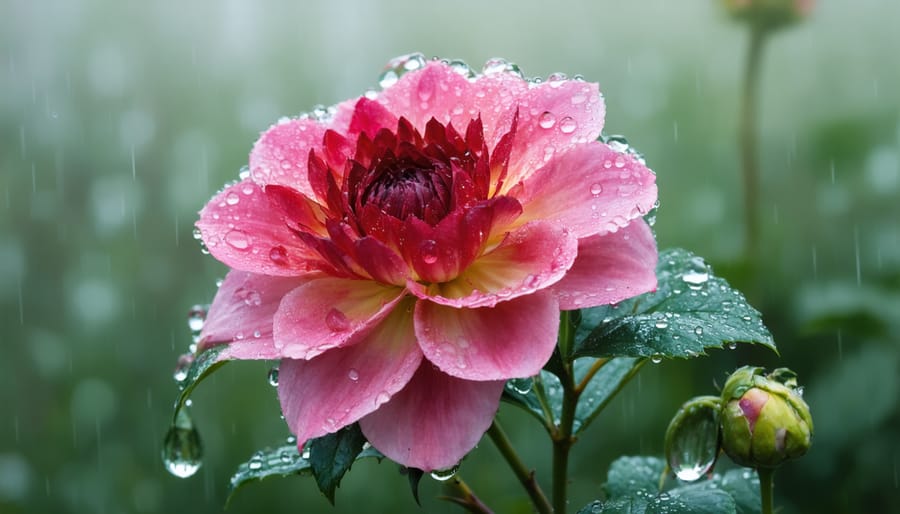Step into a world where gardens transcend mere beauty to achieve legendary status. From the meticulously manicured lawns of Versailles to the serene Japanese gardens of Kyoto, hall of fame gardens represent the pinnacle of horticultural achievement, combining artistic vision with botanical mastery. These extraordinary spaces have shaped gardening history, inspiring generations of green thumbs and transforming how we think about outdoor design.
What elevates a garden to hall of fame status isn’t just its age or size, but its ability to innovate, influence, and stand the test of time. Whether it’s the revolutionary sustainable practices of England’s Great Dixter or the groundbreaking desert landscaping of Arizona’s Desert Botanical Garden, these masterpieces demonstrate how vision, patience, and expertise can create living works of art that continue to evolve and inspire.
Today’s gardeners can learn invaluable lessons from these horticultural legends, incorporating their time-tested principles into modern spaces. From clever plant combinations to innovative design solutions, these gardens offer a blueprint for creating outdoor spaces that don’t just grow, but truly flourish. Join us as we explore what makes these gardens exceptional and discover how to bring their magic into your own backyard.
What Makes a Garden Hall of Fame Worthy?
Design Excellence
A Hall of Fame garden represents the pinnacle of landscape design, where creativity and expertise combine to create truly enchanting garden features. These masterpieces showcase exceptional attention to detail, from the thoughtful placement of every plant to the seamless integration of hardscape elements.
What sets these gardens apart is their ability to balance form and function while maintaining a strong sense of place. Expert designers craft spaces that flow naturally, creating distinct garden rooms that invite exploration. They skillfully layer plants of varying heights, textures, and bloom times to ensure year-round visual interest.
Color theory plays a crucial role, with carefully planned color schemes that evolve through the seasons. Water features, artistic elements, and creative lighting transform these spaces into living galleries that engage all the senses. The best designs also incorporate sustainable practices, working with the local climate and ecosystem rather than against them.
These gardens often feature signature elements that become their hallmark – perhaps a stunning topiary collection, an innovative vertical garden, or a series of perfectly framed views that tell a story as you move through the space.
Sustainable Practices
The Hall of Fame Garden sets a remarkable example for sustainable gardening practices, demonstrating how beauty and environmental responsibility can work hand in hand. At its core, the garden employs a comprehensive composting system that transforms garden waste into nutrient-rich soil, creating a closed-loop ecosystem that minimizes waste and reduces the need for external inputs.
Water conservation stands as another cornerstone of the garden’s sustainable approach. Through innovative rainwater harvesting systems and drought-resistant plant selection, the garden maintains its splendor while using significantly less water than traditional landscapes. Strategic placement of native plants throughout the space not only conserves water but also provides essential habitat for local wildlife and pollinators.
The garden’s commitment to organic practices shines through its natural pest management strategies, including companion planting and beneficial insect attraction. Instead of chemical fertilizers, the garden relies on organic matter and natural soil amendments to maintain healthy plant growth. This approach has created a thriving ecosystem where birds, butterflies, and beneficial insects work together to maintain natural balance.
Each plant in the garden serves multiple purposes, from providing food and shelter for wildlife to helping with soil retention and natural pest control, exemplifying the principles of sustainable garden design at its finest.
Spotlight on Legendary Gardens
The Longwood Gardens Legacy
Nestled in the heart of Pennsylvania’s Brandywine Valley, Longwood Gardens stands as a testament to horticultural excellence and innovative garden design. Originally the private estate of Pierre S. du Pont, this 1,100-acre wonderland has evolved into one of North America’s premier botanical gardens, earning its place among the world’s most celebrated garden spaces.
The gardens showcase an incredible diversity of plantings, from meticulously manicured formal gardens to wild meadows bursting with native flora. Its crown jewel, the conservatory, houses an extraordinary collection of tropical plants and seasonal displays that dazzle visitors year-round. The famous fountains, recently renovated with state-of-the-art technology, create magical water shows that combine artistry with engineering brilliance.
What truly sets Longwood apart is its commitment to education and sustainability. The gardens serve as a living laboratory for horticultural research and innovation, offering professional development programs that have trained countless garden designers and plant specialists. Their seasonal festivals, particularly the Christmas display and summer concerts, have become beloved traditions that bring communities together.
Perhaps most inspiring is Longwood’s dedication to preserving historical elements while embracing modern sustainable practices. From its heritage trees to its cutting-edge green roofs, every aspect of the gardens tells a story of horticultural evolution and environmental stewardship, making it a true hall of fame worthy destination for garden enthusiasts worldwide.

Filoli’s Historic Beauty
Nestled in the heart of Woodside, California, Filoli stands as a testament to timeless garden design and horticultural excellence. This 654-acre estate, built in the early 20th century, features 16 acres of meticulously maintained formal gardens that have earned their place among America’s most celebrated landscapes.
The garden’s signature features include a stunning succession of outdoor rooms, each masterfully planned to showcase seasonal beauty throughout the year. In spring, over 35,000 tulips create a spectacular display, while summer brings forth a riot of roses in the formal rose garden. The sunken garden, with its reflecting pools and perfectly manicured hedges, offers a sense of intimate grandeur that has inspired gardeners for generations.
What truly sets Filoli apart is its seamless blend of formal European design with California’s natural landscape. The garden rooms flow naturally into wild areas, creating a harmonious transition between cultivated and natural spaces. Notable features include the beloved Walled Garden, where fruit trees trained in espalier patterns line the historic brick walls, and the Woodland Garden, offering shade-loving plants a perfect habitat beneath towering native oaks.
Visitors can experience the changing faces of Filoli throughout the seasons, from the camellias blooming in winter to the dahlias that light up late summer borders. The garden serves as both a living museum and an educational center, offering workshops and demonstrations that keep traditional gardening practices alive for future generations.
Chanticleer’s Creative Vision
Chanticleer’s visionary approach to garden design sets it apart as a true innovator in the world of public gardens. Unlike traditional botanical gardens that focus primarily on plant collections, Chanticleer embraces a more artistic and experiential philosophy. Each garden room tells its own story, with carefully choreographed color schemes, textural combinations, and seasonal transitions that unfold like chapters in a captivating novel.
What makes Chanticleer truly special is its commitment to creative experimentation. The gardeners are given the freedom to express their artistic vision, resulting in unique features like hand-crafted furniture, imaginative plant combinations, and surprising architectural elements that emerge from the landscape. The Ruin Garden, for example, showcases how imagination can transform a simple structure into a magical space where nature and architecture dance together.
The garden’s design philosophy emphasizes the importance of year-round interest, with each season bringing new delights. Winter reveals the elegant bones of the garden through architectural plants and thoughtful hardscaping, while spring explodes with bulbs and flowering trees. Summer brings lush tropical displays and abundant perennial borders, and autumn glows with strategic use of late-season perennials and spectacular fall foliage.
This creative vision extends to sustainable practices, with the garden serving as a living laboratory for innovative ecological approaches. The result is a space that feels both wild and intentional, artistic and natural, creating an immersive experience that continues to inspire visitors and fellow gardeners alike.
Lessons from the Masters

Design Principles You Can Use
Creating a stunning garden doesn’t require acres of land or a bottomless budget. By applying design principles from historic gardens, you can transform any outdoor space into a remarkable sanctuary. Start with the principle of unity by choosing a consistent color palette or theme throughout your garden. This could be as simple as repeating certain plants or coordinating pot colors.
Layer your plantings vertically to create depth and interest, just like the great gardens do. Place taller plants at the back, medium-height specimens in the middle, and ground covers in front. This creates a natural flow and makes even small spaces feel larger and more dynamic.
Incorporate focal points to draw the eye and create visual interest. This might be a beautiful sculpture, a striking plant specimen, or even a well-placed bench. Remember the rule of odd numbers when grouping plants – clusters of three or five specimens often look more natural than even-numbered groupings.
Consider the seasons in your design. Include plants that provide year-round interest through foliage, flowers, berries, or bark. This ensures your garden remains engaging throughout the year, just like the most celebrated gardens worldwide.
Don’t forget to include pathways and resting spots. Even in small gardens, these elements create a sense of journey and discovery, making your space feel more expansive and inviting.
Plant Selection Secrets
Creating a hall of fame garden starts with smart plant selection, and the secret lies in choosing plants that work together harmoniously while providing year-round interest. Start by selecting “anchor plants” – these are your garden’s permanent residents that provide structure and stability throughout the seasons. Consider evergreen shrubs like boxwood or holly, which create elegant boundaries and focal points.
Layer your plantings by combining different heights, textures, and bloom times. Tall perennials like delphiniums or hollyhocks create dramatic backdrops, while mid-height plants like salvias and coneflowers fill the middle ground. Ground covers and spreading plants like creeping thyme or sweet woodruff complete the picture by carpeting bare soil.
Color coordination is crucial – choose a primary color scheme and stick to it. For a classic look, try the “white garden” approach popularized by Sissinghurst Castle, using various white flowers with silver and green foliage. Alternatively, create drama with bold color combinations like purple and yellow, or go for a peaceful palette of blues and pinks.
Don’t forget to include plants that offer multiple seasons of interest. Hydrangeas provide summer blooms and winter structure, while ornamental grasses offer movement in summer and golden colors in fall. Native plants are excellent choices as they’re naturally adapted to your climate and support local wildlife, making your garden both beautiful and sustainable.
Remember to consider your specific growing conditions – sunlight, soil type, and climate zone – when selecting plants. Success comes from putting the right plant in the right place.
Creating Your Own Award-Worthy Garden
Starting Your Journey
Every remarkable garden starts with a vision and careful planning. Before you begin transforming your space into a potential hall of fame garden, take time to define your goals and develop a clear strategy. Start by observing your garden throughout different times of the day to understand sunlight patterns, and throughout the seasons to note how the space changes.
Create a garden journal to document your ideas, sketches, and inspiration sources. Include photos of gardens you admire and note specific elements you’d like to incorporate into your own space. Consider what makes award-winning gardens special – it’s often a combination of thoughtful design, plant diversity, and sustainable practices.
Next, assess your resources. Calculate your available time for maintenance, budget for materials and plants, and evaluate your physical space constraints. Be realistic about your climate zone and soil conditions, as these factors will influence your plant selection and overall design possibilities.
Set both short-term and long-term goals for your garden. Perhaps you’ll start with a small pollinator garden this season and gradually expand to include other features like water elements or architectural plants. Remember that legendary gardens aren’t built overnight – they evolve through careful planning, patience, and dedication.
Consider joining local gardening clubs or attending workshops to connect with experienced gardeners who can offer guidance and inspiration. Their knowledge and support can be invaluable as you begin your journey toward creating a truly memorable garden space.

Maintaining Excellence
Creating a hall of fame garden isn’t just about the initial design and planting – it’s about maintaining that wow factor year after year. Success lies in combining proven gardening techniques with consistent care and thoughtful evolution of your space.
Start by establishing a seasonal maintenance calendar. Spring calls for pruning, soil amendment, and plant division, while summer focuses on regular watering, deadheading, and pest management. Fall brings cleanup tasks and bulb planting, and winter is perfect for planning and structural maintenance.
Keep detailed records of what works and what doesn’t in your garden. Note which plants thrive in specific locations, tracking bloom times and growth patterns. This information becomes invaluable as you fine-tune your garden’s composition over the years.
Don’t be afraid to make changes. Even the most beautiful gardens need periodic refreshing. Replace underperforming plants, adjust design elements, and incorporate new varieties that catch your eye. Remember that gardens are living, breathing spaces that should evolve with your tastes and needs.
Consider implementing sustainable practices like composting, water conservation, and natural pest control methods. These not only benefit the environment but also contribute to your garden’s long-term health and resilience.
Lastly, share your garden with others. Host garden tours, swap plants with neighbors, and document your journey. The best hall of fame gardens aren’t just beautiful – they inspire and educate others in the gardening community.
Creating a hall of fame garden isn’t just about following a set of rules or copying famous designs – it’s about finding your own path to excellence while learning from the best. Whether you’re working with a small urban plot or expansive acreage, remember that every legendary garden started with a single plant and a vision. Take inspiration from the exemplary gardens we’ve explored, but don’t be afraid to experiment and develop your own signature style. Focus on sustainable practices, embrace continuous learning, and celebrate small victories along the way. With patience, dedication, and a willingness to learn from both successes and setbacks, your garden can evolve into something truly extraordinary. Remember, today’s novice gardeners are tomorrow’s masters – so dream big, start small, and let your garden grow into its full potential.



